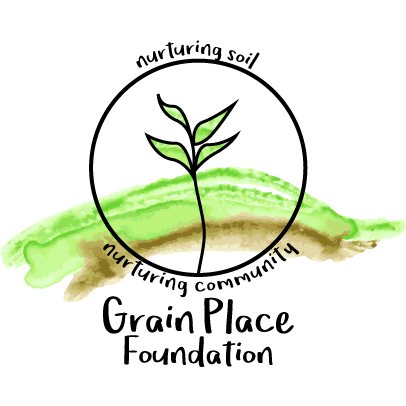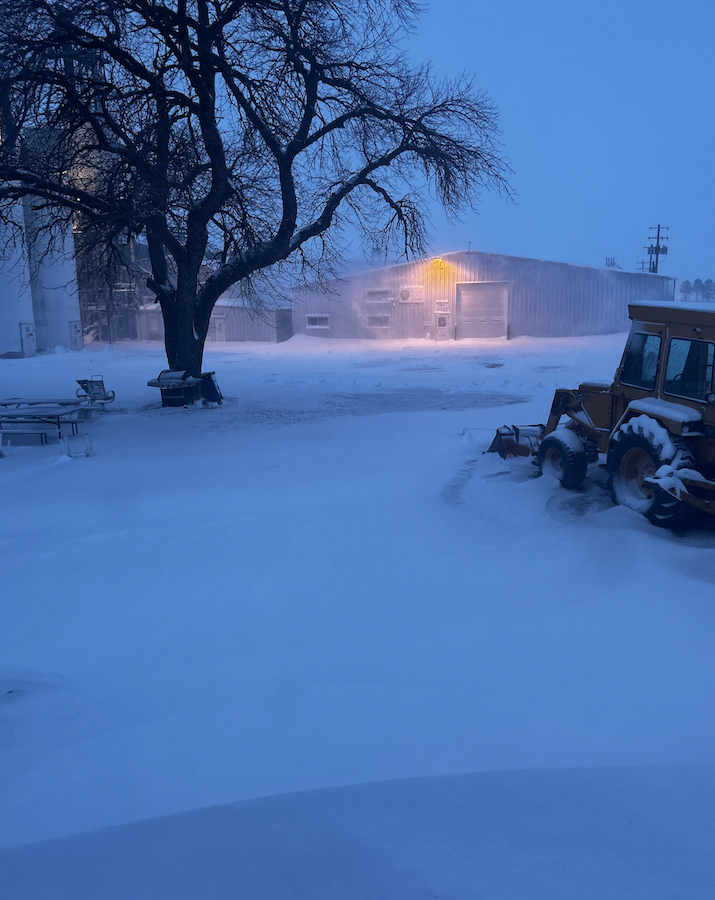
Hello again!
This is Isaac bringing you another week in the life of an intern on the farm at the Grain Place. This week we have been dealing with some freezing winter weather, including several days below zero. In addition to the cold, the farm has received several inches of snow and been very windy. While these conditions mean I have spent more time inside staying warm, there is certainly still work to be done on the farm.
The first priority for the farmers is making sure that the animals are prepared for the cold. All of the animals here have permanent shelters in their respective areas. However, they also need bedding, food, and minerals to ensure they are healthy and warm. The mineral mix that the animals here receive is a combination of kelp, salt, conditioner (which contains: Calcium, Phosphorus, Salt, Magnesium, Potassium, Sulphur, Copper, Iron, and Manganese), and small amount of Iodine. Additionally, with the cold temperature, we have been feeding the cattle soybean hulls which are high in protein and impart warmth to the animals through digestion.
In addition to caring for the animals, clearing snow is one of the other big tasks for the farmers this time of year. The farm receives an average of 28 inches of snowfall per year. Heavy snows can pose a significant number of problems, especially considering the long driveway here and employees/trucks constantly coming in and out. Therefore, it is imperative to move the snow and maintain it at levels that allow for traffic. I was able to move some snow with the bucket on the tractor this week, but Robert (the current resident farmer) and other employees have been working tirelessly to make sure the parking lot and drive stay clear of new snow. Robert was on vacation for the first week of January, so having him back on the farm has been great. He has only been at the farm for around a year, but I’ve already been able to learn a lot from him and have some good conversations about the farm and beyond.
This week I was also able to meet over zoom with two members of the Grain Place’s board. First, I got to meet with Chuck Francis – Professor Emeritus at University of Nebraska-Lincoln. It was very interesting to hear about his experiences and get to talk with him a bit about agroecology. I am very interested in agroecology, and this is something Chuck has spent a large part of his career working on. From my understanding, this is a method of thinking that contains principles which dictate practices which can be set into motion processes.
While this might seem complicated at first, I think that working through an example of what that could mean helps to clarify. For example, let us consider the agroecological principle of diversity. The principle of diversity could be executed in numerous different ways, but let us consider the practice of crop rotation to increase diversity. Using crop rotation, it is likely that soil microbial processes will be stimulated and carry out diverse functions in the soil food web, with beneficial effects. While this is an oversimplification, it was a great experience to meet with Chuck and learn more about this super interesting approach to agriculture. Reading his work and hearing him talk definitely gave me a better grasp on the subject and possible avenues to pursue and include that in my future plans. Further, he gave me lots of possible ideas for my research pieces on the farm, and I look forward to pursuing those.
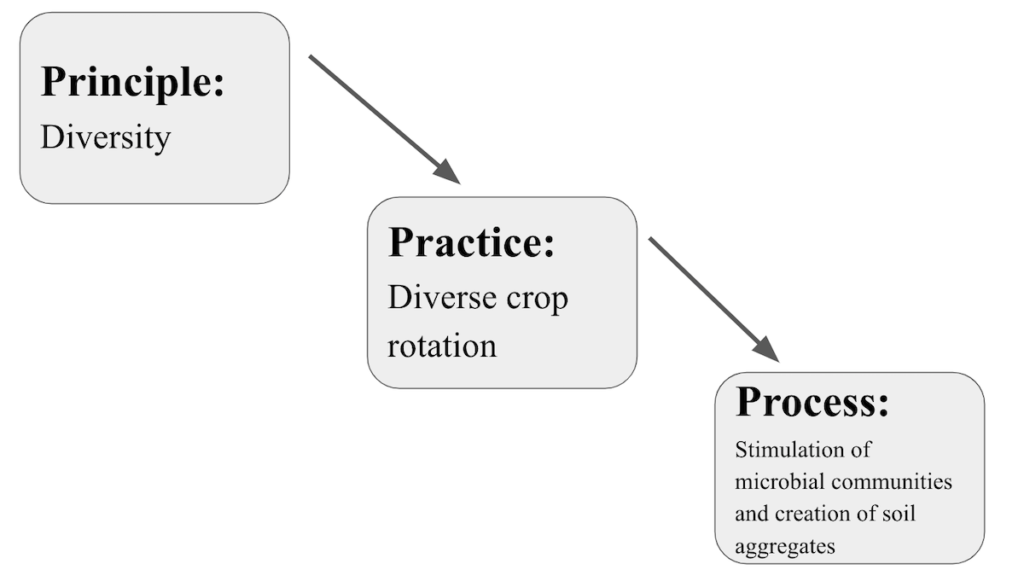
Agroecology Example:
Later in the week, I was also able to meet another member of the Grain Place Foundation board, Jane Coghlan. Jane was the very first intern here on the farm, returning for two summers during her undergraduate career. It was interesting to hear about her experiences at the farm and compare how the internship program has changed since she was here. Currently, Jane works at Arizona State University’s Swette Center for Sustainable Food Systems. I learned a bit about the great work that they do there and her other ventures – namely an online graduate program she is currently working on. So far, it has been great to make these connections with people associated with the farm and I hope to continue doing this throughout the rest of my time at the Grain Place.
Along with the snow and zoom meetings, on Wednesday of this week, we got 28 new pigs on the farm! The little pigs seemed to settle in very quickly, and took a liking to their shelter almost instantly. In order to make sure they had ample food before the cold set in, Robert and I mixed up food for them that same day. The recipe for the pig’s food depends on the screenings available from the plant and other formulations to create a balanced feed. This week, they received popcorn ground and mixed with flour. Additionally, the pigs receive the same mineral mix as the cattle with a small amount of Zinc added instead of Iodine.
With the snowy weather, I have been inside working on my online course as well as various other projects. I have also been experimenting with some new cooking ideas. As I write this, I am preparing long grain brown rice (from Grain Place Foods) with some chicken and vegetable stir fry. As an intern here, everyday is filled with new and exciting challenges, and this week has been no different. I’m excited to continue sharing my experiences and hoping for a bit of warmer weather in the days to come!
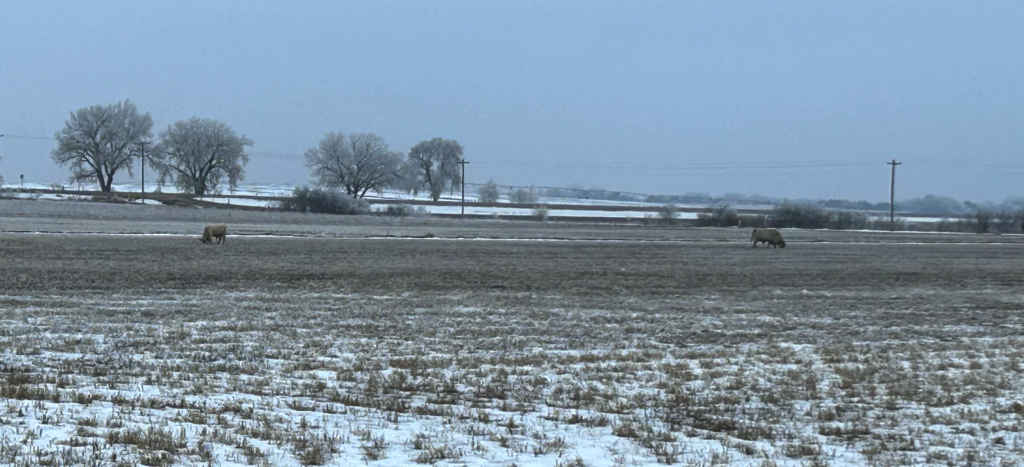

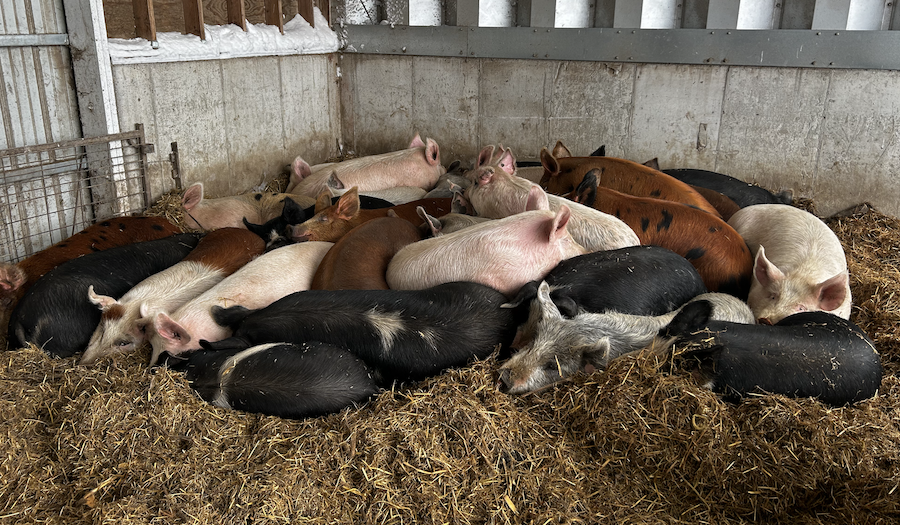
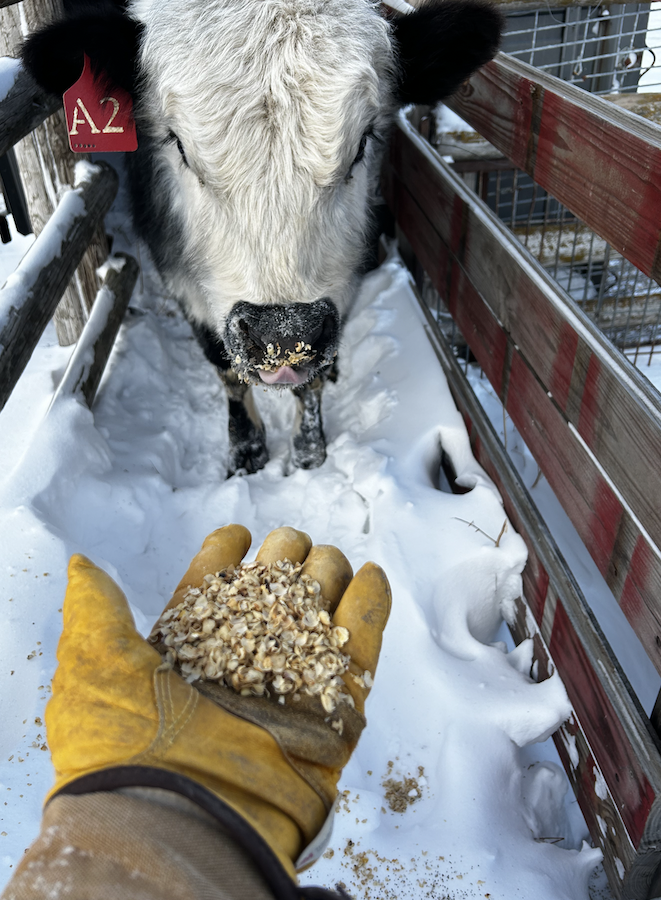
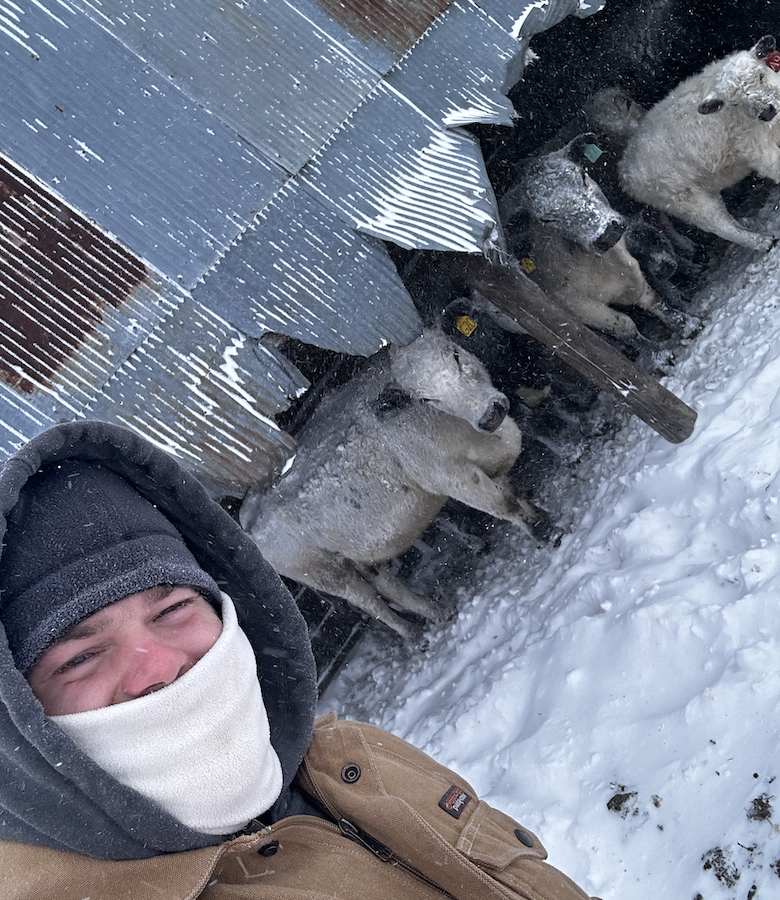

Our Pilot Internship Program is supported through the United States Department of Agriculture (USDA) Transition to Organic Partnership Program (TOPP). TOPP is a program of the USDA Organic Transition Initiative and is administered by the USDA Agricultural Marketing Service (AMS) National Organic Program (NOP)

